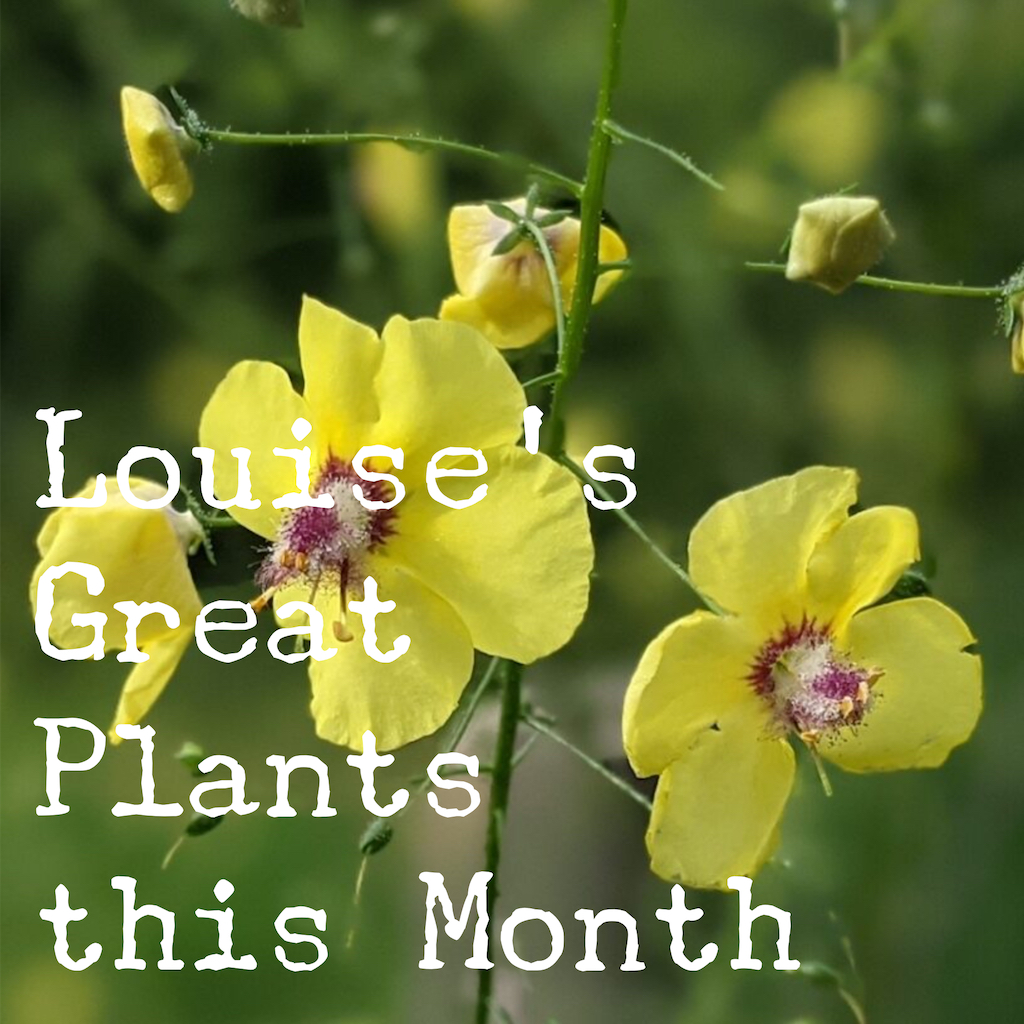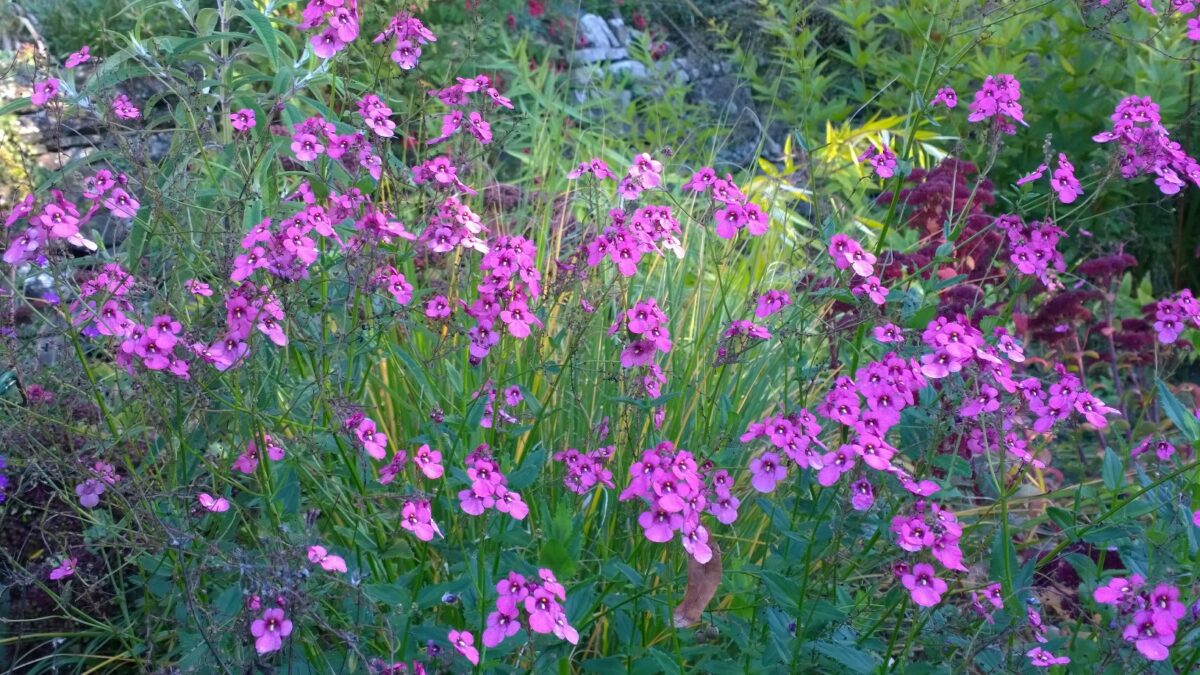
High summer and everything in the garden going at full bore – hurray! This is when you really find out how successful your plans were for new plants, new borders, this year’s fruit and veg crop etc. Triumph? Disaster? A bit of each, I expect, like me. There are still some things to do in this holiday season, so let’s have a go at tackling eyesores, softwood summer cuttings and dealing with cut flowers amongst other things…………………
Beauty instead of a beast
I had long been meaning to deal with an ancient and ugly honeysuckle growing at the end of our pergola. You know the scene – great straggly legs of dead-looking stems and twigs, with little sprouts of leaf at the top sometimes carrying measly little flowers. The climbing rose growing with it, was still alive, but had long since been almost strangled out of existence. Now that the frenetic work of early summer is over, I decided to tackle it.
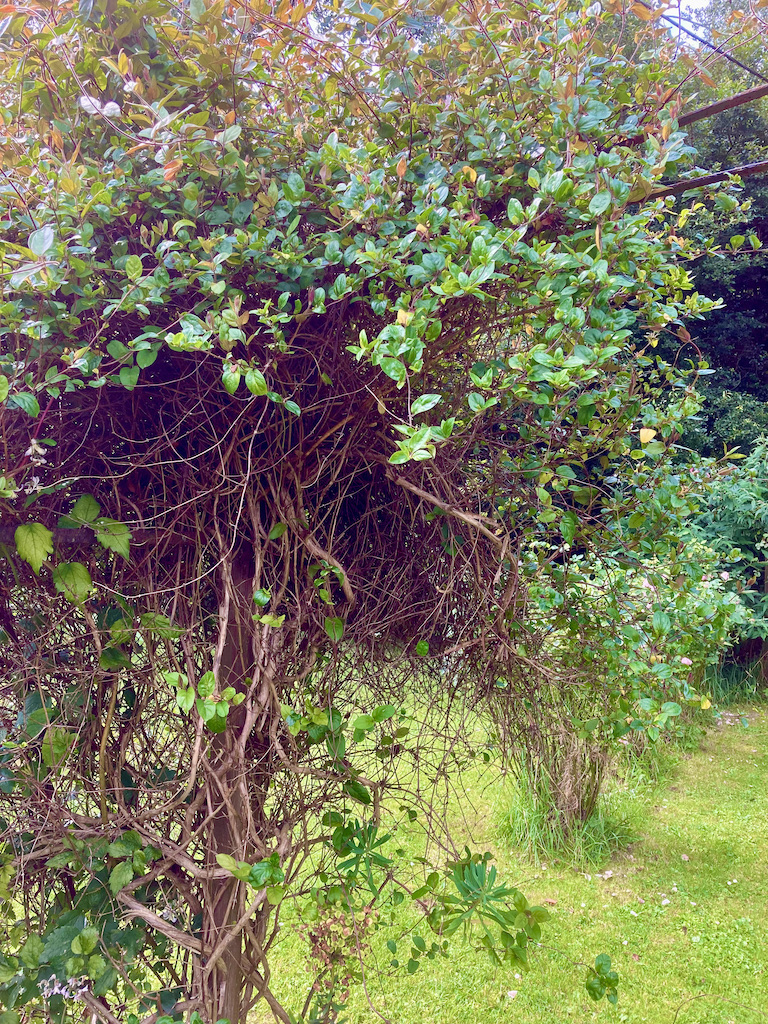
Armed with secateurs and little saw for the thicker bits, I gradually hacked my way through, very ruthlessly chopping everything off higher than about 4ft (120 cm), and releasing the benighted rose stems. And in the process, I realised that the Clematis jouiniana Praecox I had planted at the foot of the rose, had scrambled up inside the honeysuckle. This is a non-twining herbaceous clematis and I had no idea that it had woven its way to a height of 8ft (240cm) or so! I carefully disentangled the clematis stems and laid them down until I had finished all the cutting-back.
I then lifted the stems back up and tied them into the rose and the pergola where we could enjoy their small pretty pale lavender flowers at head height. I gave them a good drink, with a little soluble fertiliser mixed in, to make them feel loved again. What a bonus! I had managed to get rid of an eyesore, allowed the rose some welcome air and light, AND gained a beautiful ‘new’ adornment for the pergola to delight us during August.
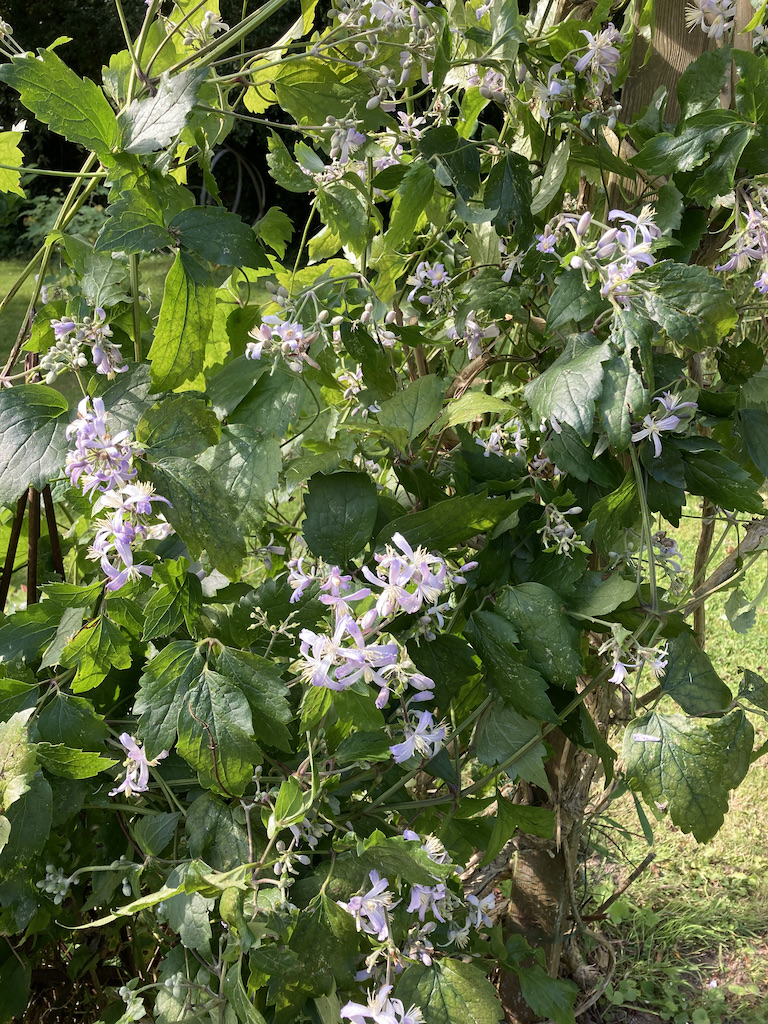
Have you got a job like that which you have been putting off for a while? Resolve to deal with it now; I can’t promise that it will turn out as well as mine did, but it might. You’ll feel SO good after the wretched task is done, and you can believe that you have totally deserved your cuppa at the end.
Clever cuttings
Here’s another nice task for this time of year – how about taking some cuttings of a load of summer garden favourites ? It is a particularly good idea to take some cuttings of perennials with dodgy hardiness that might not make it through a cold winter; go for plants like Verbena, Fuschia, Pelargonium, Penstemon, Osteospermum, Diascia (like the lovely D. personata in this week’s feature pic), Aubrietia, Argyranthemum, Bidens, lavender, rosemary, even much bigger things like Buddleia, Hydrangea, Betula (birch) and Magnolia….truly the list of plants to try is almost endless.
The process is straightforward and the same for any of them:
- Collect some shoots from your chosen plants early in the morning when the plants should be full of sap. Your shoots should be about 4” (10cm) long. Put them straight away into a plastic bag, so they don’t dry out at all.
2. Deal with your cuttings as soon as you possibly can. Fill some pots with compost with extra grit or vermiculite added.
3. Take the lower leaves off each cutting, and pinch out the soft tip. Some folk dip the ends into hormone rooting powder or gel, but I don’t bother these days.
4. Make holes (4-6, depending on the size of your pots) round the edge of the pot with a pencil or dibber, and tuck a cutting into each hole with the lowest pair of leaves just above the surface.
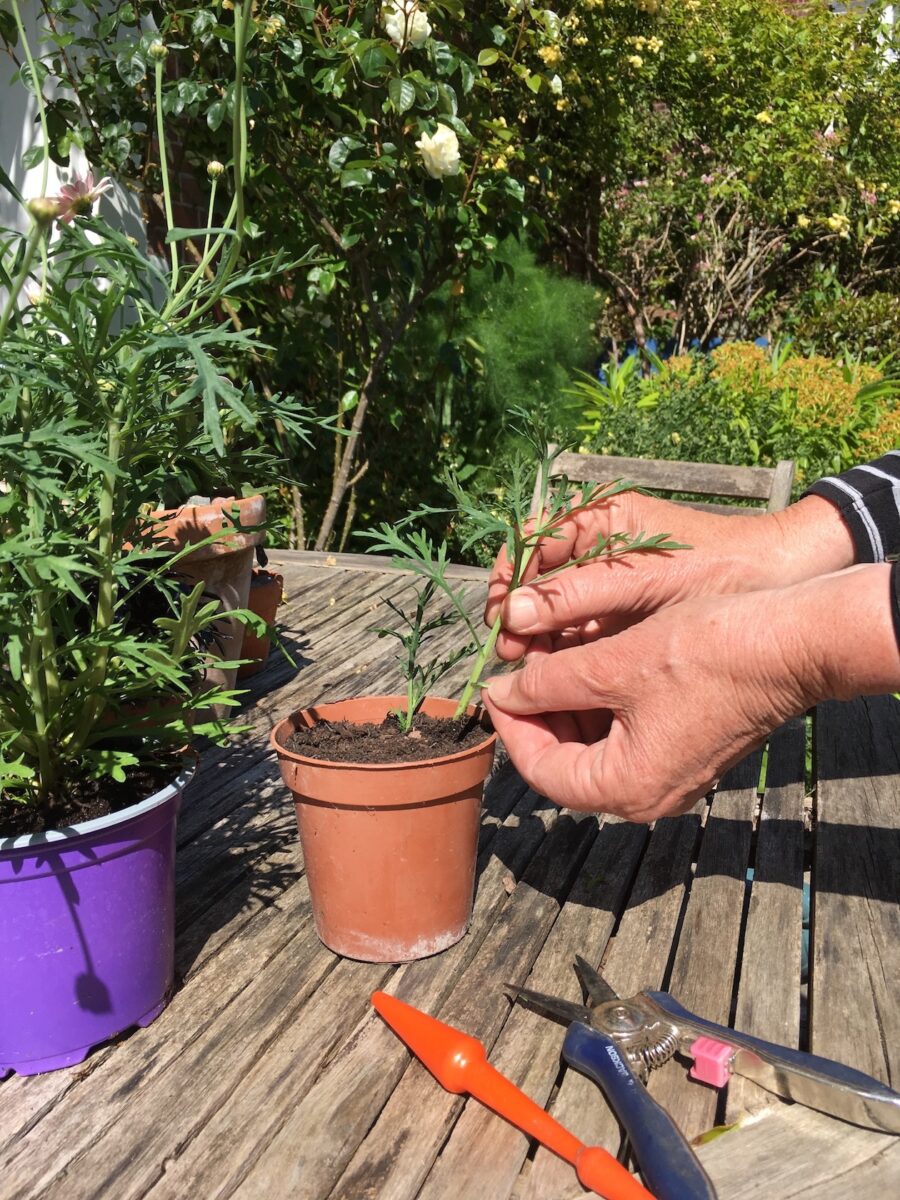
5. Water and label the pots and then put them into a closed propagator box, or fix a clear plastic bag round the top of each pot with a rubber band. This is to keep the humidity high, but take off the bag twice a week for a few minutes to get some air around them. With rosemary, lavender and pelargoniums, I think it’s better to leave off the plastic bag, because too much humidity makes them more likely to rot before they root (you want that extra ‘o’!).

6. Leave the pots in a bright place but not in direct sunlight, and keep the compost moist. It may take up to eight weeks, but you’ll know when the cuttings have rooted because they will start to show new growth at the top.
7. Slowly increase the time each pot of cuttings spends out of the propagator/bag, to ‘harden’ them up, and then you can carefully pot each new plant into its own pot to grow on.
Total magic, eh! And if something goes wrong, and none of your cuttings work this time, well, you haven’t lost anything, and you’ll have better luck next time!
Gardening shorts
- A hot August day can raise the temperature in the greenhouse – make sure all the vents and windows are open, and damp down the floor to bring down the heat and increase the humidity.
- I hope you have got plenty of flowers for some indoor vases. Pick them early in the morning and plunge the stems straight into deep tepid water for a few hours before arranging. Cut the stems again for your vase and yet again when you change the water every couple of days. Yeah, yeah, I know, it’s a counsel of perfection, but do it if you remember! Don’t crush the stems – this is now believed to allow more bacteria in and shorten their vase life.
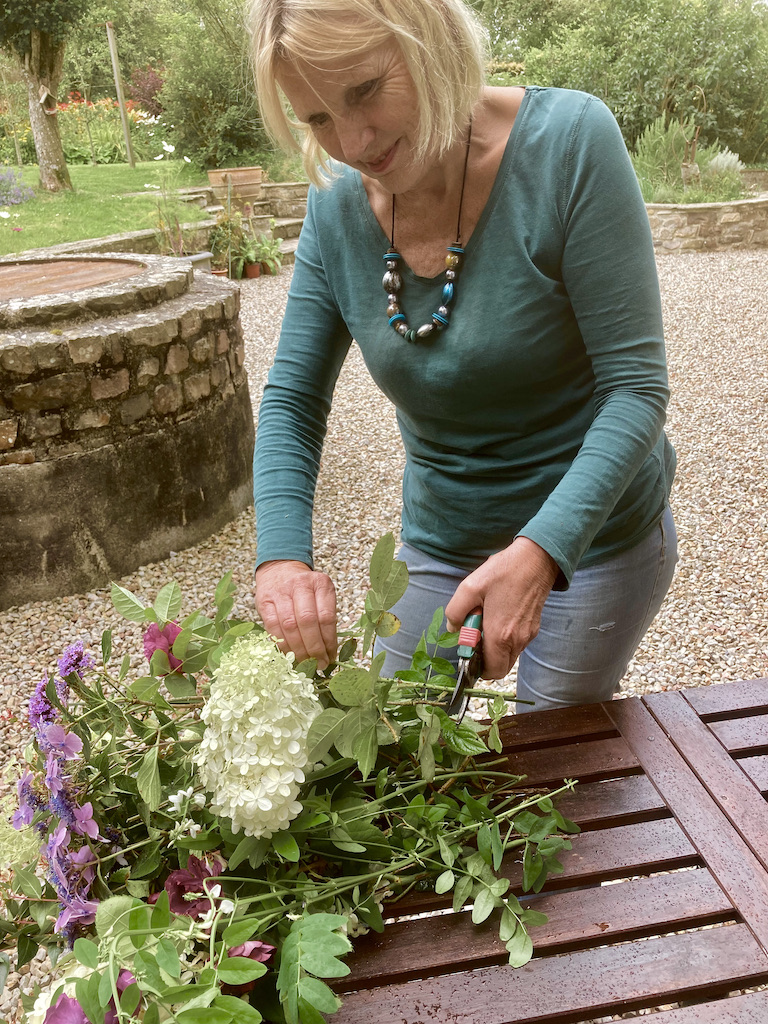
- As they finish fruiting, take out the fruited branches of blackcurrant bushes, to keep them producing fresher wood to bear future harvests.
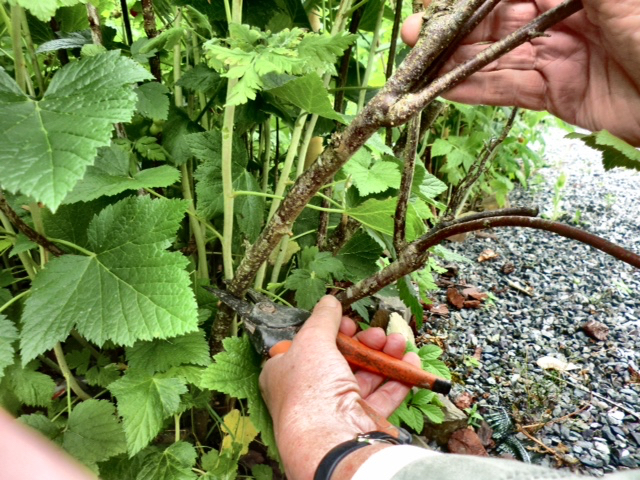
- August is the month to give wisteria its summer prune – I expand on how to do this (or instruct your other half on how to do it!), in an earlier blog here.
PS – We would LOVE to have more folk reading our weekly blogs. If all of our email followers persuaded one more friend or relative to sign up for them, we would double our readership (I bet you all wish that you were as good at Maths as I am!)
More NB If you’d like a bit more gardening chitchat from the3growbags, please type your email address here and we’ll send you a new post every Saturday morning.
